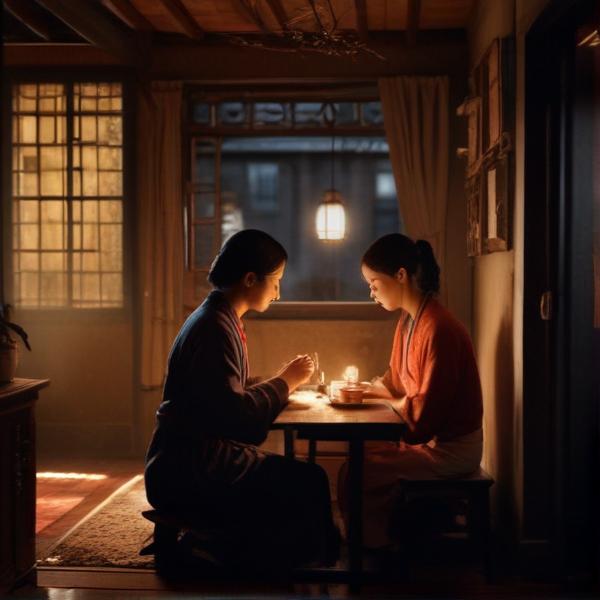基本信息 (Basic Information)
含义与用法 (Meanings & Usage)
中文核心释义 (Core Chinese Meaning): “什么”的组成部分,常用于表疑问;也可作“十”的变体,古代有“杂、众”之意。
英文核心释义 (Core English Meaning): Part of the interrogative 'what' (as in 'shénme'), sometimes used as a variant of 'ten', or to mean 'miscellaneous' or 'various' in ancient times.
象形意义 / 为何这么写 (Pictographic Meaning / Writing Rationale)
文言文释义 (Classical Chinese Meaning)
深入学习 (In-depth Study)
字源故事 (Origin Story)
字形演变 (Character Evolution)
常用词语和例句 (Common Words & Examples)
什么 (what)
你在做什么?
Eng: What are you doing?
什锦 (assorted; mixed; a medley)
我喜欢吃什锦糖。
Eng: I like eating assorted candies.
什物 (odds and ends; various items)
箱子里装满了家里的什物。
Eng: The box is filled with household odds and ends.
相关成语 (Related Idioms)
相关成语信息待补充。Related idiom information pending.
多语言翻译 (核心释义) (Translations (Core Meaning))
- French: quoi (dans 'quoi', 'quel'), divers, diversifié
- German: was (wie in 'was', 'welche'), verschieden, gemischt
- Spanish: qué (como en 'qué', 'cual'), varios, diverso
- Italian: che (come in 'che cosa'), vario, assortito
- Portuguese: o que (como em 'o que', 'qual'), vários, variado
- Russian: что (в составе «что», 'какой'), разное, разнообразный
- Arabic: ما (كجزء من 'ما'), متنوع، منوع
- Persian: چه (در ترکیب 'چه'), متنوع، جوراجور
- Dutch: wat (in 'wat', 'welke'), verscheidene, gemengd
- Polish: co (jako część słowa 'co', 'jaki'), różne, mieszane
- Vietnamese: gì (trong 'cái gì'), đa dạng, hỗn hợp
- Ukrainian: що (у складі слів 'що', 'який'), різноманітний, мішаний
视频学习资源 (Video Learning Resources)
通过以下链接在热门视频网站搜索 "什" 的更多讲解:
Search for more explanations of "什" on popular video sites:
- 在 Bilibili.com 搜索 "什 字源 说文解字" (Search on Bilibili)
- 在 YouTube.com 搜索 "什 character origin etymology" (Search on YouTube)
网络参考 (Web References for "什") ()
网络内容摘要 (Web Content Summary):
```html“什”的核心含义与文化背景: The core meaning and cultural background of "什":
- “什”在古代主要表示“十”,源自古代军队和群体的编制方式,如“十人为什”,即每十个人组成一组,称为“什”。 In ancient China, "什" mainly represented "ten". It originated from groupings in the military or society, where every ten people formed a unit called "什".
- 在《诗经》等古籍中,“什”还用于表示“诗歌的篇目组”,如“十篇为一什”。 In classics like The Book of Songs (Shijing), "什" was also used to refer to a group of ten poems. For example, "十篇为一什" means a collection of ten poems as a "什".
用法和易混点: Usage and possible confusion:
- 现代汉语中,“什”(shén)常作为“什么”(shénme, what)的缩写形式,如“什嘛”。不过单独使用“什”时通常读作“shí”,表示“十”。 In modern Chinese, "什" (shén) is often used as the first character in "什么" (shénme, what). However, when used alone, it is usually pronounced "shí" and means "ten".
- 常与“十”混淆,“什”主要用于特定的合成词或古文表达,现代单独表示数字时更常用“十”。 It is commonly confused with "十" (ten). "什" is typically used in specific compound words or classical contexts; "十" is more frequently used as the standalone number "ten" in modern Chinese.
常见词汇: 什物(assorted things),什么(what)。 Common words: 什物 (assorted things), 什么 (what).
如需更深入的汉字起源资料,建议查阅权威汉字字源辞典。 For more detailed information about Chinese character origins, consult authoritative etymology dictionaries.
```什_百度百科
又 篇什。 《 朱子 曰》诗雅颂无诸国之别,故十篇为一卷,犹军法十人为什也。 《 五经 通义》国风多寡不等,不称什。 雅颂 十篇为聮,惟鱼藻,荡及闵予小子,虽无过乎什,亦称什,举成数耳。 若不及者,如駉颂四篇,𨙻颂五篇,皆不称什也。 [6]
汉字"什"的起源、演变过程-汉字字源辞典
汉字字源辞典收录7747条汉字词条,基本涵盖了常见汉字的字源解析,是汉字研究的必备工具。
更多图片 (什 More Images) ()
